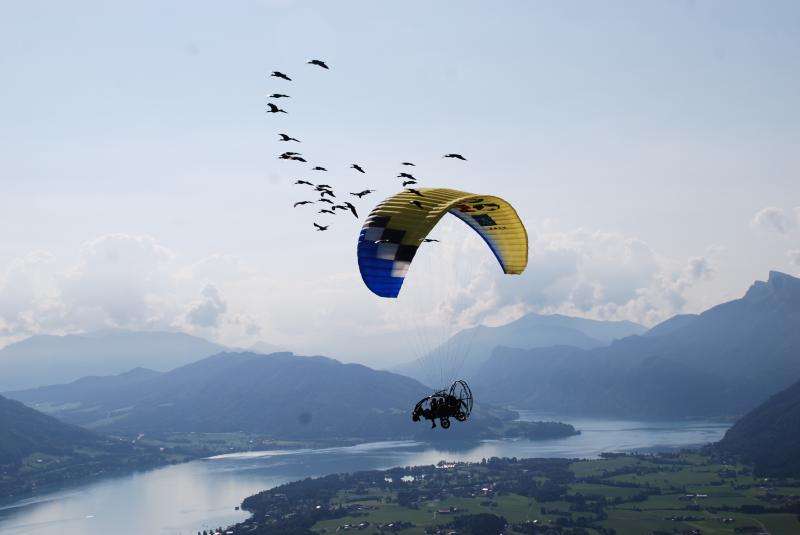Northern bald ibises fit for their journey to Tuscany

January 2014 saw the launch of one of Europe's largest species conservation projects. The project's aim is to reintroduce the northern bald ibis, a species of migratory bird, to Europe by the year 2019. Veterinarians from the University of Veterinary Medicine, Vienna, make sure the animals are fit for their journey to the south. 31 hand-raised northern bald ibises are healthy and will begin their migration coming Saturday, following an ultralight aircraft towards Tuscany. Other 17 juvenile birds raised by their parents will follow experienced adult birds.
The northern bald ibis was native to Central Europe until the 17th century. Due to extensive hunting, this strange-looking migratory bird completely disappeared from Europe around the year 1630. According to the Zoological Society of London, it is the 12th most endangered species of bird in the world.
The University of Veterinary Medicine's service for ornamental birds has been in charge of the medical care of the northern bald ibises since 2008. "We regularly examine the animals' health. The juveniles must be fit for their migration. Last week some animals developed an acute gastrointestinal infection, probably due to the very high temperatures outside. We treated them successfully with antibiotics. Now they are ready to go," explains Alexandra Scope, the university's specialist for avian medicine.
"This year, 48 juveniles will fly south for the first time. We measure the animals' weight, conduct a general clinical examination and check the birds for infections. A blood test provides insight into possible organ disease. This season's animals are all fit."
Juveniles are raised by humans but also by parent animals
This year, 32 animals were raised by hand at Tiergarten Schönbrunn. One of these birds unfortunately died in an accident. Another 17 animals were raised by their parents in Kuchl, Salzburg and in Burghausen, Bavaria. The birds are trained to follow an ultralight aircraft at Seekirchen am Wallersee.
The juveniles that were raised by their parents will also begin their flight soon together with the adult birds. Some of the older animals know the way and fly south independently. The hand-raised birds will follow an ultralight that will guide them to southern Tuscany. The researchers from the northern bald ibis team hope that after sexual maturity the birds will begin to migrate independently between the Alps and Tuscany. Some of them already do.
Scope regularly travels to Tuscany herself in order to examine the northern bald ibises medically at their wintering location. Next year, more than 80 birds will be there waiting for her. "A northern bald ibis which we treated for a broken wing last year after it had been shot is already fully capable of flight and is raising juveniles again this year," Scope reports.
European Union a financial supporter of the northern bald ibis reintroduction
The aim of the EU project LIFE+ Biodiversity, with partners from Austria, Italy and Germany, is to reintroduce the northern bald ibis to Europe. The plan is to have more than 120 northern bald ibises migrate between the northern Alpine foothills and Tuscany by the year 2019.
The project is based on the years of experience of the Waldrappteam conservation project which began its work in 2002.
A first small breeding colony was established in Burghausen, Bavaria. Two additional breeding colonies are to be established in Kuchl, Salzburg and Überlingen, Baden-Württemberg. Several human-led migrations using ultralights are planned from the different breeding areas to the common wintering area in southern Tuscany.
Northern bald ibises are peaceful animals. Conflicts with people are rare. The harmless birds pose no threat to people or domestic animals. Wherever the northern bald ibises show up, they attract a lot of attention because of their strange appearance. They quickly become very popular in their breeding and wintering areas.
Provided by University of Veterinary Medicine—Vienna

















